When exploiting the idea of time travel to make a movie or video game, handling the subject with care is essential. Free Radical Design’s decision to produce the PlayStation 2 jewel “TimeSplitters” in October 2000 was no exception. TimeSplitters, an FPS game released by Eidos Interactive, was a full generation ahead of its time.
A first-person shooter video game with a conflict with TimeSplitters, beings that use time crystals to traverse through time, at its center. The goal of this action is to destroy the human race and alter the course of human history. Between 2000 and 2005, the three games in the series were released. A reconstituted Free Radical Design, now under the control of Deep Silver, is working on the creation of a fourth game.
Rise of TimeSplitters
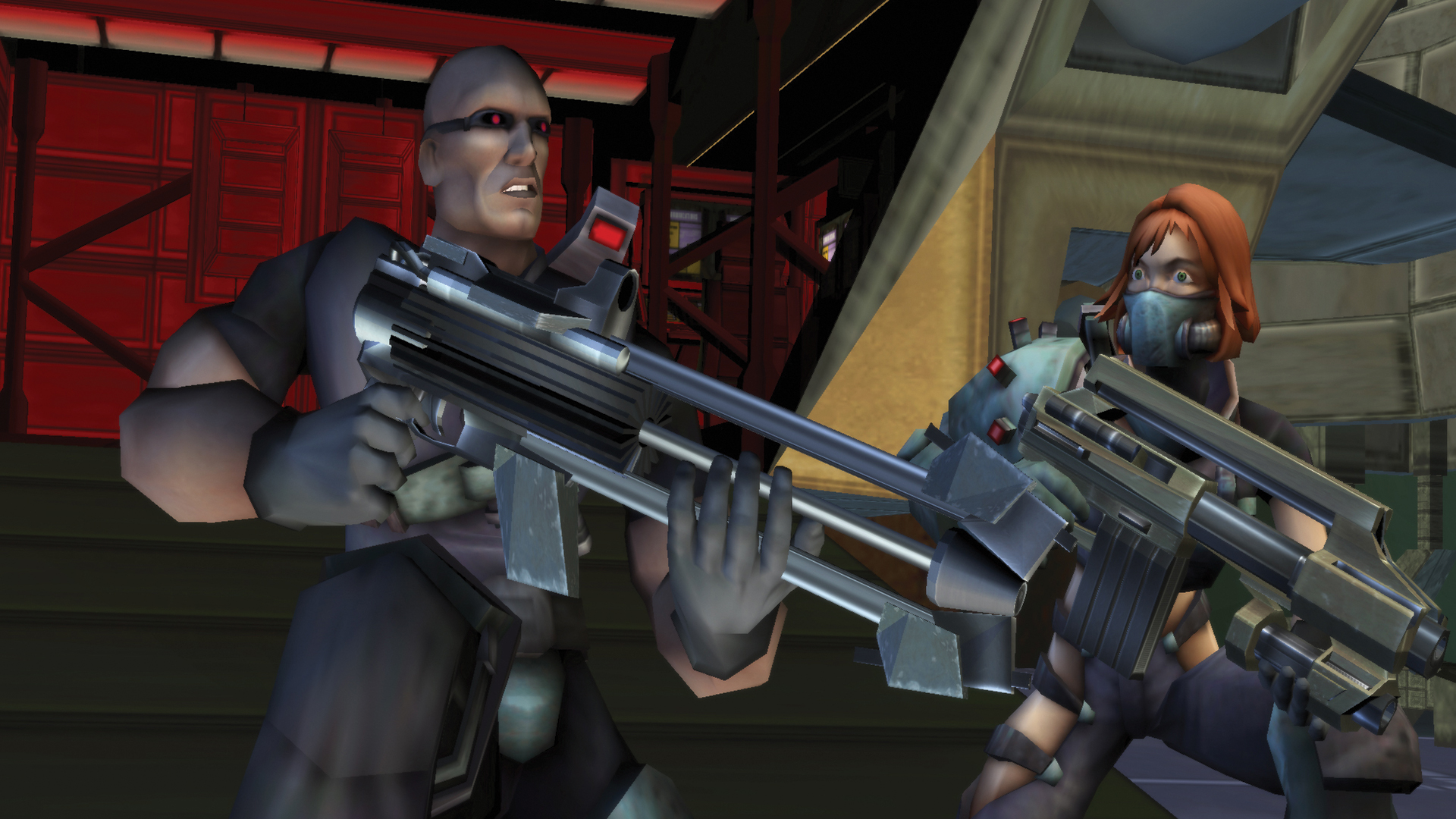
These games of the series are often considered spiritual successors to GoldenEye 007 and Perfect Dark, due to the similarity in gameplay and design. A part of the development team of GoldenEye 007 and Perfect Dark created Free Radical Design. Steve Elias and David Doak set up the company, Free Radical Design and were then followed by director Karl Hilton, soundtrack composer Graeme Norgate, and Lee Ray.
Not a lot of people knew that the 1st level of TimeSplitters was absolutely a callback to the first level in GoldenEye, only using the advanced tech to produce a more in-depth and involved level. TimeSplitters began development after Free Radical Design made an agreement with Eidos Interactive in February 1999. Free Radical Design got the approval to work for roughly three years on a novel FPS, with the approval to obtain a PlayStation 2 devkit.
The intent of the development team was to build a game with an increased quantity/variety of enemies compared to GoldenEye and Perfect Dark. They also increased the game speed by adjusting it to the new console’s power. Because of the debut entry’s rushed development, Free Radical Design had so many ideas they were unable to implement into it. With such creative energy still flowing, the team started development on TimeSplitters 2 the day after the first game was completed.
Each game of the series feature elements of exploration and puzzle-solving. The multiplayer mode comes with both co-operative and competitive features. Multiplayer mode was local play only up until TimeSplitters: Future Perfect, where online multiplayer mode was introduced. Arcade mode is probably the best place to use multiplayer feature as it allowed up to four players and 10 bots to shoot it up in various game modes across many maps.
Mapmaker is also an interesting feature of the game which was done with a grid-based level editor that allowed players to create their own levels to play on in Arcade mode. TimeSplitters 2 allowed players to create their own story-level indoor maps, until TimeSplitters: Future Perfect, which allowed players to do the same for outdoor maps as well. There are a variety of weapons to choose in games like Assault Rifle and Shotgun, Grenade Launcher, Mauser Gun, Colt Pistol, Uzi, Proximity Mine and many more.
The second and third part of the game introduced some new weapons like Tactical 12-Gauge, Silenced Pistol, Timed Mine, Sci-fi Handgun, Monkey Gun and Time Disruptor Grenade. The original TimeSplitters has 24 different weapons, TimeSplitters 2 has 30, and TimeSplitters Future Perfect has 37 featuring weapons from retro 1930s gangster weapons to science-fiction plasma weapons with little or no regard for realism. These weapons can be grouped together to produce a whole time theme.
The best part of this game was that it never took itself serious. While the first game has 64 playable characters ranging from monkeys to monsters and time-period waiters, the later games in the series featured more characters in the roster. In arcade mode of the third installment of the game, players can chose from a variety of 150 playable characters, each with distinct attributes in areas such as speed and stamina. The characters of the game were comic book inspired designs and emphasizes more on cartoon like qualities. There are not many games where you see your character getting kicked in the nuts and then getting a picture taken of that condition!!!
TimeSplitters (2000)
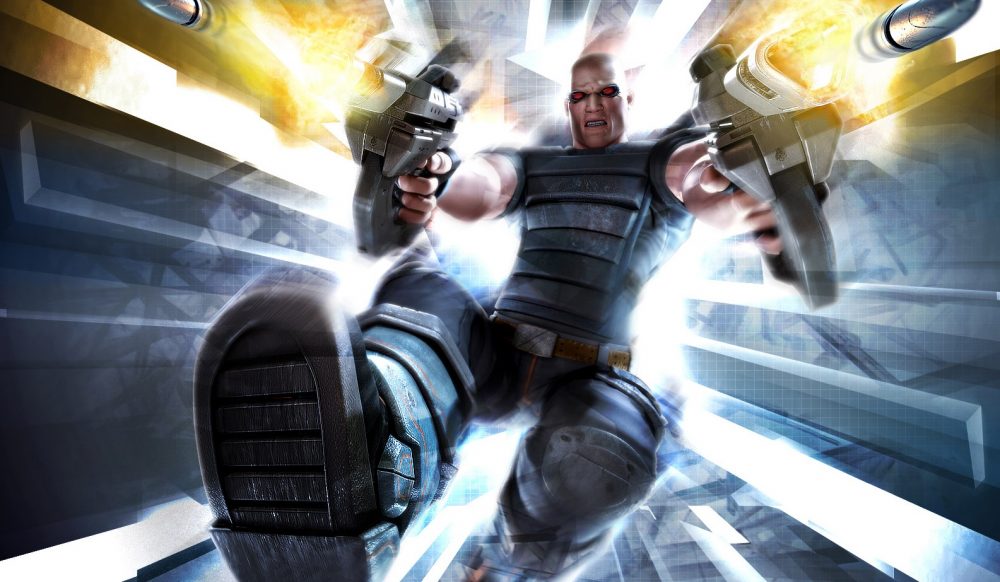
The installment of the Timesplitters series was released on 26 October 2000 in North America and 24 November 2000 in Europe as a PlayStation 2 launch title. The game’s aiming system and unlockable options through quick level completions revealed its similarities to GoldenEye 007 and Perfect Dark. Timesplitters features story mode, arcade mode, challenge mode and mapmaker.
Arcade mode is to enjoy the multiplayer feature of the game where up to four players and ten computer-controlled bots can compete individually, or in up to four different teams in certain modes. The challenge mode provides an opportunity to unlock and obtain rewards to progress in the game but the challenge mode itself needs to be unlocked by completing the story mode.
The story of the game is based on a war against the TimeSplitters and the objective of each level is to retrieve an object and then carry that object to the exit portal. The story takes place between 1935 and 2035 and the levels are split into three equal groups, each containing a level set in the far past, near the present day and in the future, within which, the levels may be completed in any order. Out of the 18 characters, in each mission, the player can choose from one of two characters specific to that mission particularly.
The game was praised and received positive reviews due to the game’s fluid and action-packed multiplayer mode. A Metacritic score of 81 till date and being the runner-up for GameSpot’s annual “Best Shooting Game” award tells us how fans of the FPS genre loved and enjoyed the game.
TimeSplitters 2 (2002)
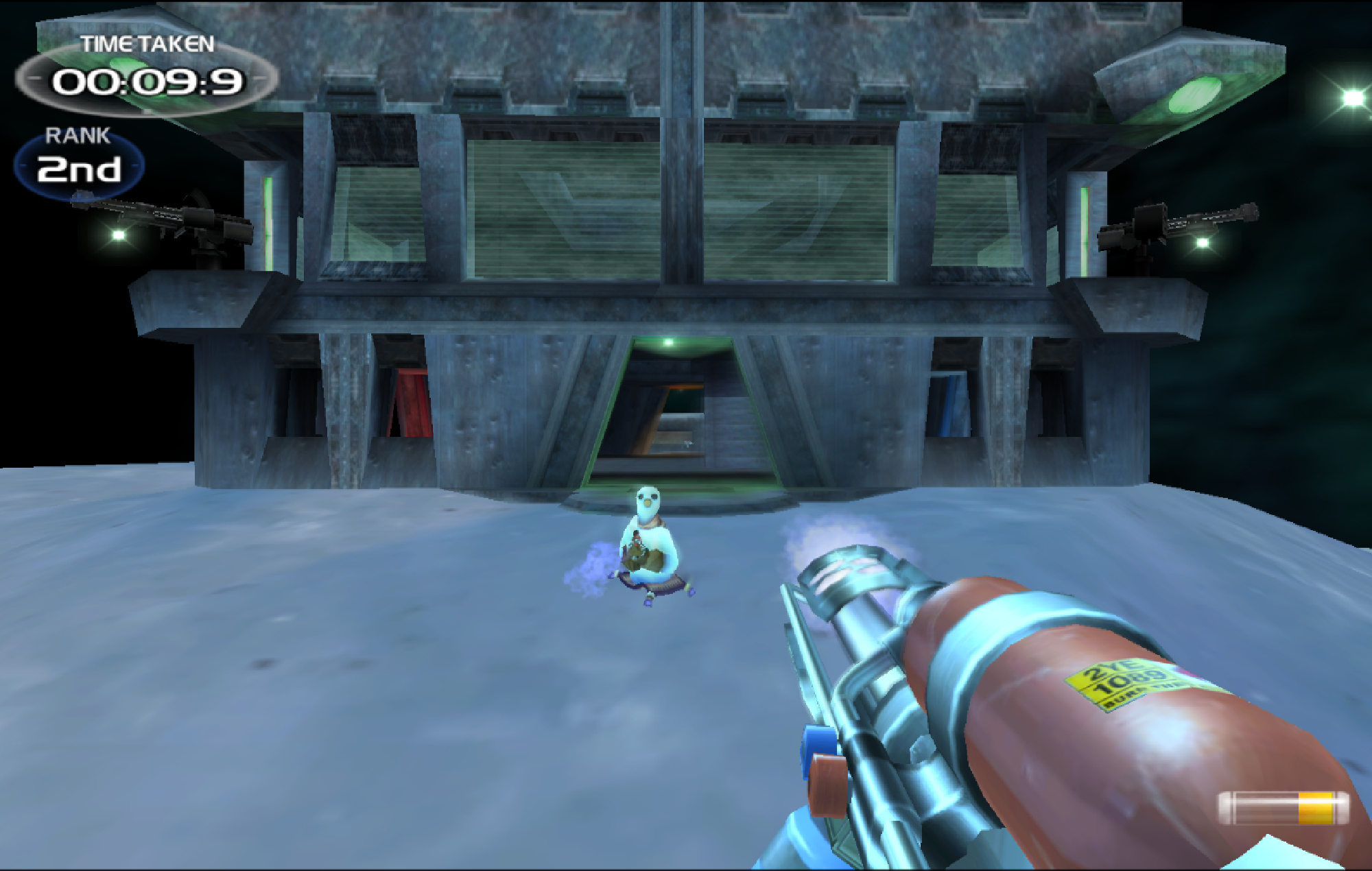
Released for PlayStation 2, GameCube and Xbox in 2002, TimeSplitters 2 earned the title of one of the best first person shooter game on any system. Despite being criticized for the lack of the online feature and the GameCube and Xbox version receiving favorable reviews, the game went onto win GameSpot’s annual “Best Shooter on GameCube” award and was also nominated for Best Shooter on Xbox. The PlayStation 2 version of the game received “universal acclaim”. One of the prime reasons behind the success of this game was its split-screen multiplayer feature which was highly praised by critics.
TimeSplitters 2 like its previous version comes with Multiplayer arcade mode. The development team of the game upgraded the multiplayer mode and up to 16 players can play via i.Link or LAN network now. There are 125 characters to choose from in arcade mode. The challenge mode in TimeSplitters 2 is split into arcade league and challenge mode. The story mode of the game features 10 levels, each in a different time period. Each level comes with three difficulty levels, Chilled, Normal, and Frantic. These difficulty levels not only change the strength of the enemies, but also increase the length of the level by adding additional objectives.
The story of the game takes place in the year 2041, when Sergeant Cortez and Corporal Hart are sent to a TimeSplitter-infested space station to stop the TimeSplitters from using the special objects called Time Crystals to travel through time changing the course of history, bringing Earth to ruin. By the time they reach the bridge TimeSplitters take the Time Crystals into various time periods using the time portal.
Attacked by another squad of TimeSplitters. Corporal Hart decides to stay at the bridge to keep the TimeSplitters at bay while Cortez goes into different periods of time to retrieve the Time Crystals. In each time period Cortez takes the form of a person from that particular period of time. For example, when Cortez arrives in the Wild West, he takes the form of a bounty hunter. When he arrives in a 24th-century robot factory, he takes the form of a robot.
When Cortez returns to the space station after retrieving all of the Time Crystals, the TimeSplitters manage to break into the bridge and Corporal Hart was killed in action. To stop the relentless TimeSplitters from retrieving the time crystals from him, Cortez manages to set the station to self-destruct and escape before its destruction. The development team cleverly ends the game with this cliff hanger moment which leads to the events of TimeSplitters: Future Perfect.
TimeSplitters: Future Perfect (2005)
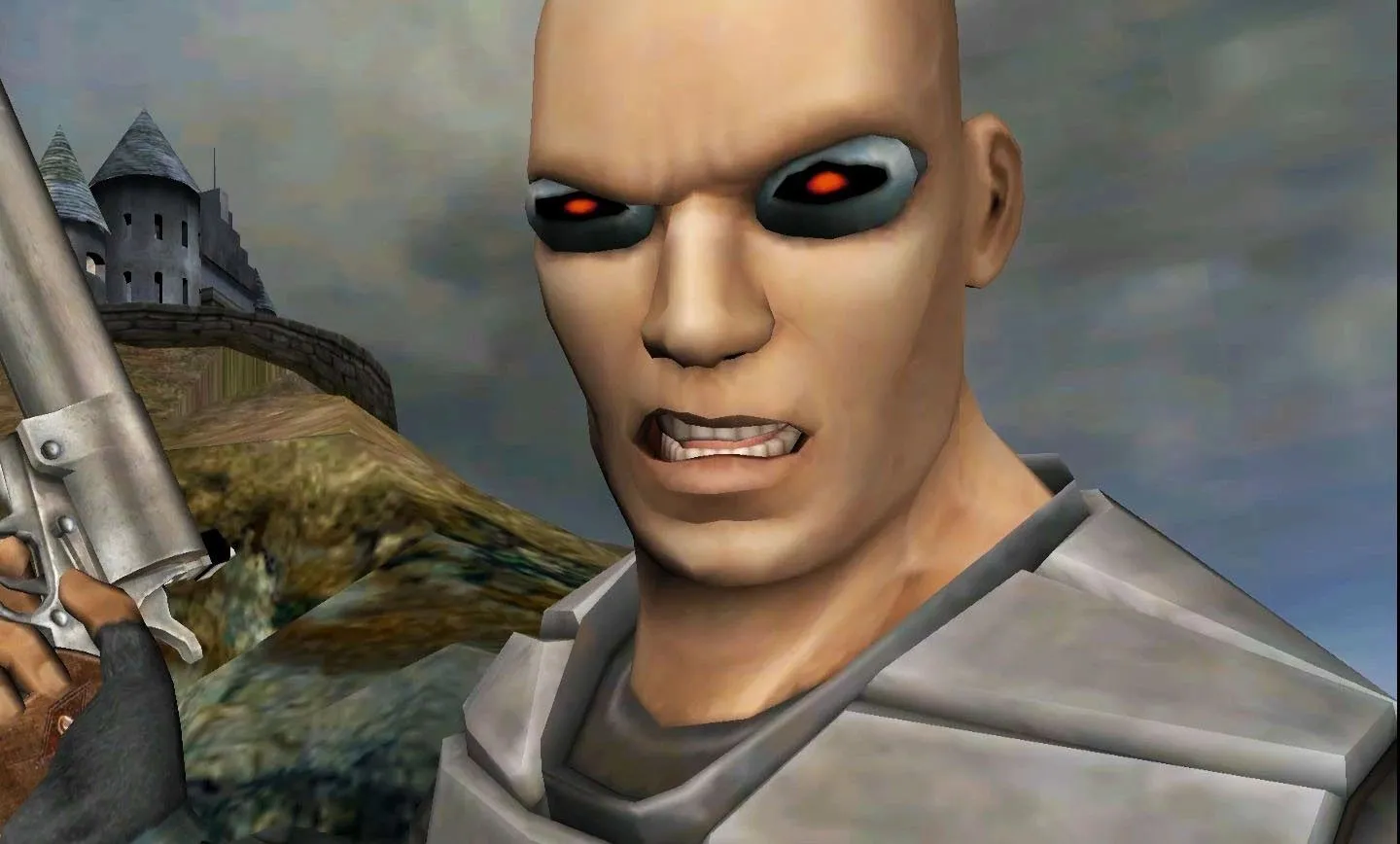
TimeSplitters: Future Perfect released on March 22nd, 2005 in North America and March 25th in Europe for PlayStation 2, GameCube and Xbox. This game was the first in the series to be published by EA (Electronic Arts). The graphics of the game was a great improvement while the pace of the game decreased, probably due to the featuring of a plot-driven story. A roster of 150 characters gave a lot of options to choose from. Most of the weapons are new or have been significantly changed in appearance or function from previous games. The Mapmaking features outdoor mapping as well allowing open skies, more items, more customization and more logic options.
The Arcade and Challenge modes both allow the player to unlock new characters, weapons, and new locations for Arcade. The story mode begins in 2401 when Sergeant Cortez, after destroying the space station at the end of TimeSplitters 2, crash lands with his ship on future Earth.
With two fellow Marines Sergent Cortez battles unknown masked figures and TimeSplitters through the valley before reaching HQ. Cortez embarks on a mission and travels through time, both past and future to stop the TimeSplitters race from being created. Cortez begins his journey from 1924 where he confronts an unknown man with a high concentration of Time Crystals. After the man escapes, Cortez travels to 1969 and defeats Khallos.
After receiving information from Any, General’s personal assistant, Cortez travels to 1994 and there he finds the creator of the TimeSplitters, a mad scientist named Dr, Jacob Crow. In an effort to destroy all of Crow’s lab Cortez travels to 2052, where Crow has advanced his gene-splitting experiments. Cortez and Amy Chen, a highly trained spy sent to defeat Crow as well, fight through his lab facility to find Crow.
But Crow escapes again. Cortez travels to the year 2243, where machines now rule the planet, and have waged war on humans and each other. Cortez hacks into one of the machines, identified as R-110 and also teams up with a small group of cyborg rebels fighting against the machines. He makes his way to Crow’s now-extremely large and powerful lab, filled with thousands of TimeSplitter embryos.
When Cortez realized That after combining with the TimeSplitter race and a war machine, Crow is now a formidable opponent and Cortez is not strong enough for him, Cortez, with the help of Anya travels to 1924 with R-110 to stop Crow before he can further his lab experiments. Even in 1924 Cortez finds Dr. Crow fused with a large bipedal robot and Crow destroys R-110, leaving him and Cortez face to face.
At this point Anya creates a time loop to send Cortez back in time a few minutes to when he first arrived in hopes of being able to double-team Crow with two Cortezes with R-110. After defeating Crow, Cortez puts a raw crystal into a device that causes a chain reaction that destroys the entire compound. Due to this ending it was assumed that this would be the last installment of the series, but, that was not the case.
Fall of TimeSplitters
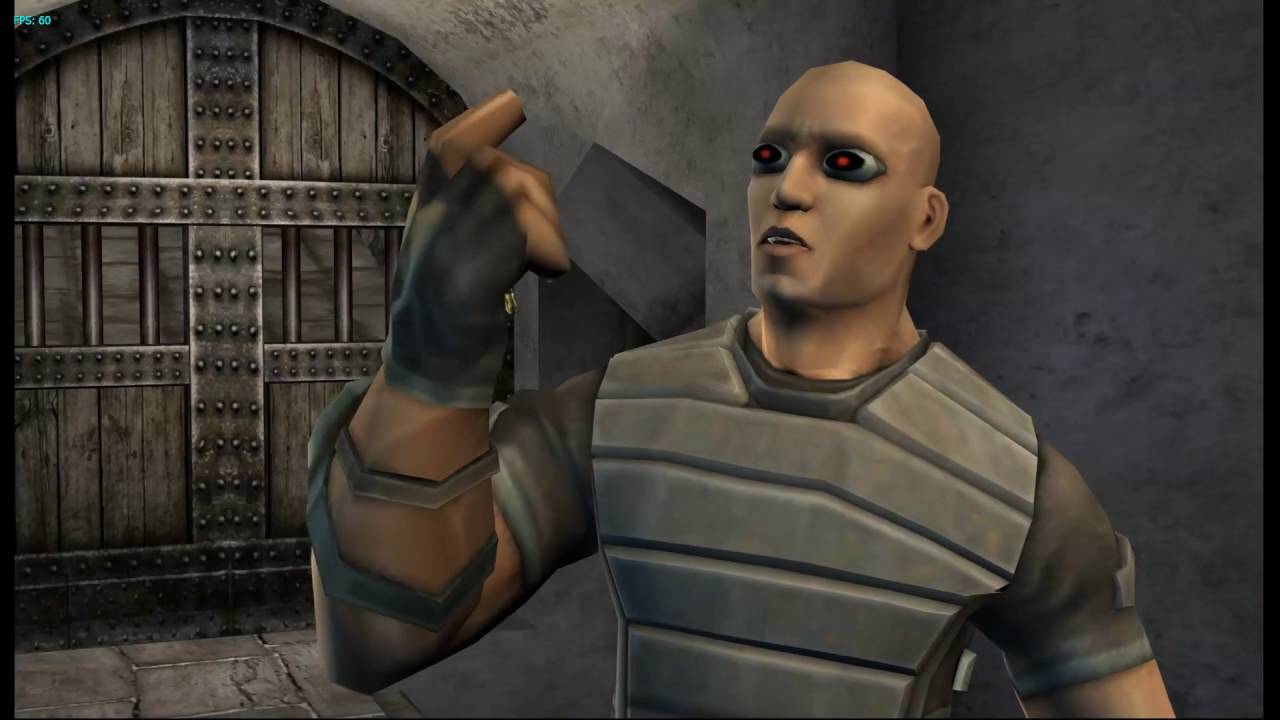
The fall of the franchise was not exactly due to the fall or fault of any of the games, but due to the fall of Free Radical Design. After releasing and failing of TimeSplitters 4’s contemporary shooter Haze, Free Radical Design understood that they are unable to get deals to make the kinds of games that they were making. One of the major financial blows to Free Radical Design along with Haze’s failure was the termination of contract with LucasArts for developing a third Star Wars Battlefront game.
It was more than a simple prototype and the company worked on the game for about three years before LucasArts grew dissatisfied with missed deadlines. In an interview, David Doak describes how Publisher EA diverted much of the marketing budget for the third game towards GoldenEye: Rogue Agent. They were more interested in the Bond game becoming a hit despite its worse quality, which left the third game with little support from the publisher. It is a shame too, because Future Perfect is a great culmination for the trilogy in all categories.
This left Free Radical in a worse spot financially, starting its downward trajectory towards closure. A year of initial development and a playable demo was all that existed of TimeSplitters 4, but there was just no interest from publishers, leading Free Radical into administration only to be sold to Crytek in 2009. The poor reception for Free Radical’s previous game, Haze, was cited as one of the main reasons for the lack of publisher’s interest.
Even when there were talks of a new TimeSplitters game, to be released on the next generation of consoles with the utilization of CryEngine 3 and DirectX 11 technology, some predicted that there is no future for TimeSplitters including Steve Ellias. The prediction was made more concrete by the shutdown of Crytek in 2014, with the majority of the company’s staff moving to Deep Silver’s Dambuster Studios.
After the cancellation of TimeSplitters 4, Crytek tried to combine greatest hit elements from across the trilogy and announced TimeSplitters Rewind. In September, 2020 new gameplay footage was released and it was informed that a team of 57 people are working on it.
Till now we don’t know anything about any release window. An HD version of TimeSplitters 2 was also in talks which was supposed to be developed as a downloadable product during 2008. Steve Ellis also expressed a desire to see the HD version released eventually, hoping that it could be the catalyst that is required in order to raise enough interest in TimeSplitters 4 that a publisher might want to fund it. Fans of the franchise left their hope of witnessing a new and better version of TimeSplitters up until now.
Future of TimeSplitter Franchise
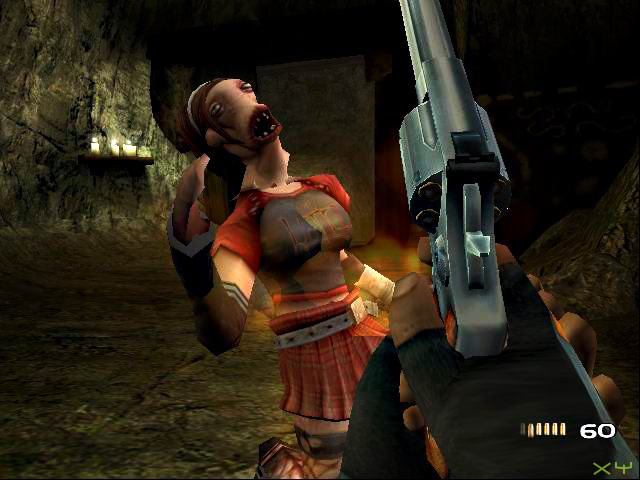
In August 2018, Koch Media did announce that they had acquired the IP and publishing rights for TimeSplitters, with the intention of publishing future games in the series via their Deep Silver publishing company. On May 20th, 2021, Publisher Deep Silver made an announcement that a new game in the time-traveling shooter series is in its developmental stage at newly reformed Free Radical Design, the original studio behind the TimeSplitters games.
It was also announced that the new Free Radical would be headed not just by Ellis, but also by Doak, marking the return of both franchise creators amongst other key original members. The development of the game will begin in the next few months once the studio is fully established.
